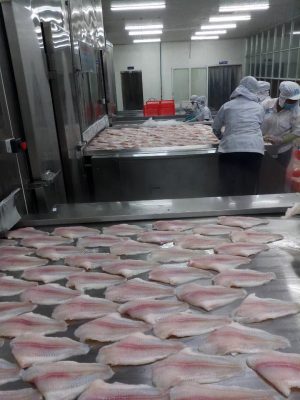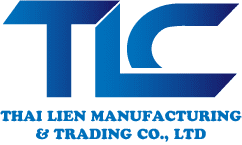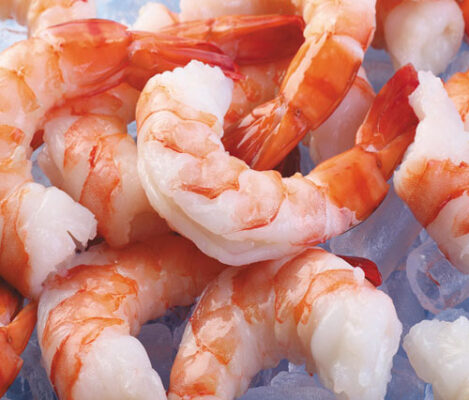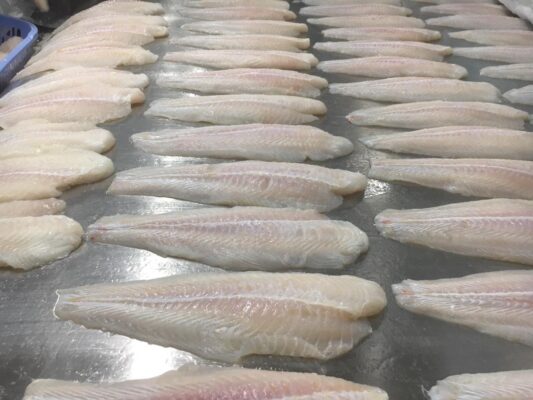Frozen Seafood Export in Vietnam Market 2023: A Comprehensive Guide
Introduction
In the bustling world of international seafood trade, Vietnam’s prominence as a major player in the frozen seafood export market cannot be overlooked. With its rich marine resources, skilled labor force, and strategic geographical location, Vietnam has established itself as a key contributor to the global seafood supply chain. In this comprehensive guide, we delve into the various facets of the frozen seafood export industry in Vietnam market 2023, examining its growth trajectory, market trends, challenges, and the driving factors behind its success.
Frozen Seafood Export in Vietnam: A Primer
As of 2023, Vietnam’s frozen seafood export industry stands tall, catering to the increasing demand for high-quality frozen seafood products worldwide. The industry boasts a diverse range of products, including shrimp, fish, squid, crab, and more, each meticulously processed and frozen to maintain optimal flavor and nutritional value.
Market Trends and Insights
Heading: Rising Global Demand for Premium Seafood Vietnam’s frozen seafood export industry has experienced a surge in demand due to shifting consumer preferences towards premium and nutritious seafood products. Health-conscious consumers are seeking protein-rich options, and Vietnamese exporters are meeting this demand with an array of responsibly sourced products.
Heading: E-Commerce and Direct-to-Consumer The rise of e-commerce has revolutionized the seafood export landscape. Vietnamese exporters are leveraging digital platforms to establish direct connections with consumers, providing transparency and convenience in the buying process. This trend has expanded market reach and increased consumer trust.
Heading: Sustainable Practices and Eco-Friendly Initiatives With growing environmental concerns, sustainable practices have become paramount. Vietnamese seafood exporters are actively adopting eco-friendly fishing techniques, complying with international standards, and contributing to the conservation of marine ecosystems.
Challenges and Solutions
Heading: Environmental Concerns and Climate Impact The seafood industry faces challenges from climate change and its impact on marine life. Vietnamese exporters are collaborating on initiatives to minimize carbon footprint, reduce waste, and protect ocean biodiversity.
Heading: Quality Control and Compliance Maintaining consistent product quality is crucial for sustained success. Vietnamese exporters invest heavily in quality control measures, adhering to international standards and certifications to ensure that their frozen seafood products meet consumer expectations.
Heading: Trade Regulations and Market Access Navigating trade regulations and accessing international markets can be complex. Vietnam has actively engaged in trade agreements, easing market access and promoting a competitive edge for its exporters.
Future Outlook
Heading: Innovation and Technology Adoption The future of Vietnam’s frozen seafood export industry hinges on innovation. The industry is adopting advanced freezing technologies, cold chain logistics, and traceability systems to enhance product quality and consumer satisfaction.
Heading: Diversification of Product Portfolio Vietnamese exporters are anticipated to expand their product offerings further to cater to diverse consumer preferences. This diversification will allow them to tap into new markets and strengthen their foothold in existing ones.

FAQs about Frozen Seafood Export in Vietnam Market 2023
Q: What makes Vietnam a significant player in the frozen seafood export industry? A: Vietnam’s abundant marine resources, skilled labor force, and commitment to quality position it as a key contributor to the global seafood supply chain.
Q: How has e-commerce impacted the seafood export landscape in Vietnam? A: E-commerce has enabled Vietnamese seafood exporters to establish direct connections with consumers, offering transparency and convenience in the buying process.
Q: What steps are Vietnamese exporters taking to ensure sustainable practices? A: Vietnamese exporters are adopting eco-friendly fishing techniques, complying with international standards, and contributing to the conservation of marine ecosystems.
Q: What challenges does the seafood export industry face from climate change? A: Climate change poses a threat to marine life. Vietnamese exporters are collaborating on initiatives to minimize their carbon footprint and protect ocean biodiversity.
Q: How do Vietnamese exporters ensure consistent product quality? A: Vietnamese exporters invest in quality control measures, adhering to international standards and certifications to meet consumer expectations.
Q: What strategies are in place to address trade regulations and market access challenges? A: Vietnam actively engages in trade agreements to simplify market access and create a competitive advantage for its seafood exporters.

Conclusion
The frozen seafood export industry in Vietnam market 2023 is a dynamic and thriving sector that showcases Vietnam’s commitment to quality, sustainability, and innovation. With rising global demand, sustainable practices, and technological advancements, Vietnamese exporters are poised for continued success in the international seafood market.





